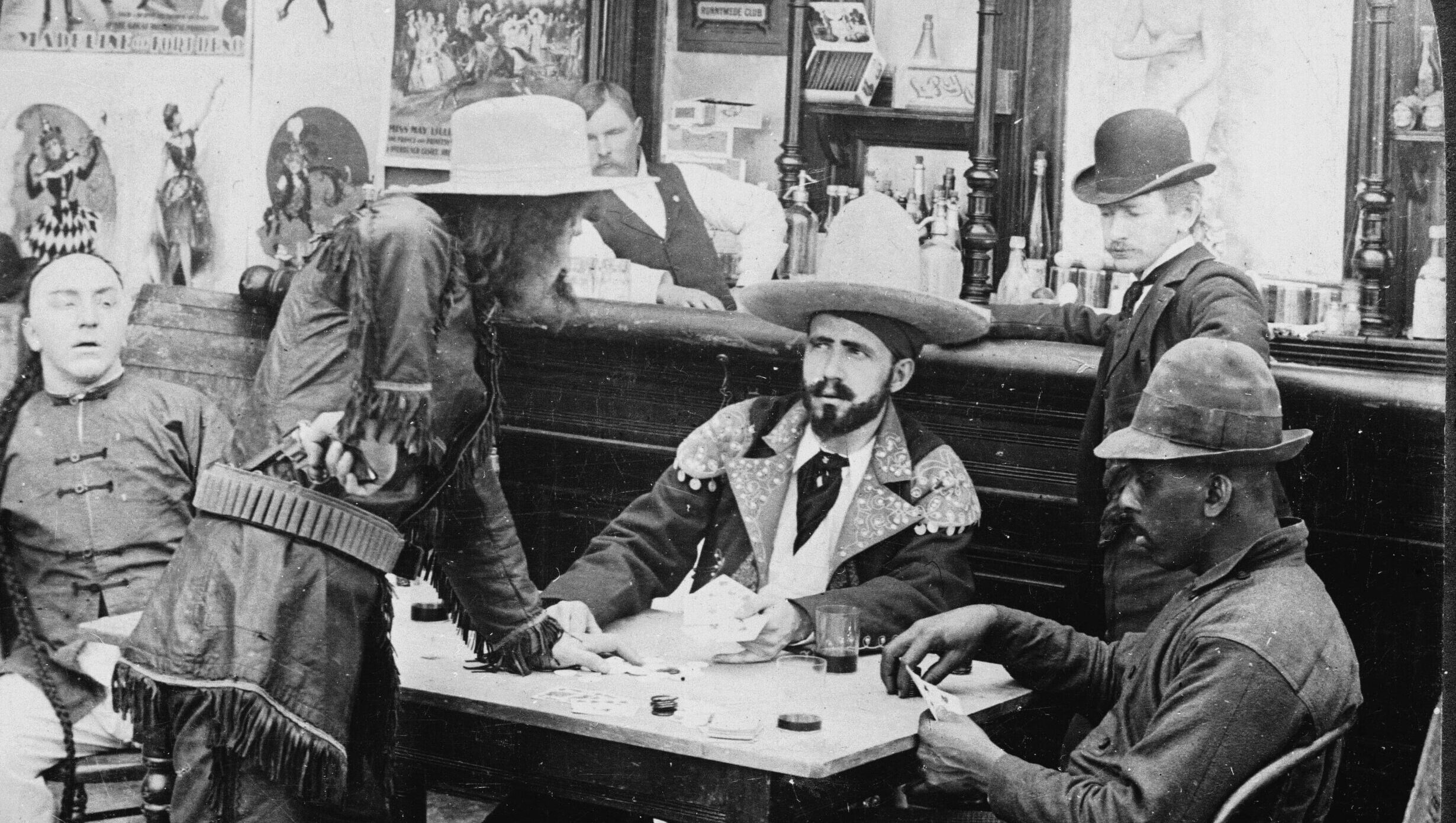1688: The First Modern Revolution
by Steve Pincus
(New Haven: Yale University Press, 2009)
In his inaugural lecture in the Chair of Medieval and Renaissance English at Cambridge, C. S. Lewis suggested that part of the great divide separating us moderns from our ancestors is that they were subject to rulers, while we are governed by leaders. The difference, as he noted, is not merely verbal. Self-rule, in its various forms, is so central to modern political culture that even when we submit to strenuous restraint, we are averse even to think of it as rule by another. When did this frame of mind become dominant? Steve Pincus, of Yale University, thinks that the tipping point came in 1688, when the English chased off the last of their kings to have attempted anything like rulership. The new era of modernity, he argues, was consecrated not by the blood of the Bastille or of Bunker Hill, but of the Boyne.
In staking this claim, Professor Pincus understands himself to be correcting not only current misconceptions and tired Victorian commonplaces but also a trend of misinterpretation dating back almost to the revolution itself. Its leaders had thought they were making the world anew, but already by the 1720s, the revolution’s partisans were fashioning an account of it that would provide rhetorical cover from Tory criticism. At the century’s end, this moderate Whig interpretation was given its canonical formulation by Edmund Burke, to whom 1688 meant the restoration of ancient liberties, not the creation of new ones. With Macauley in the nineteenth century and Trevelyan in the twentieth, this peaceful or irenic interpretation was graven in stone. Or so it seemed. But now comes a bold dissertation seeking to prove that the revolution was the very reverse of what has long been assumed. Not a palace coup engineered by a few Whigs and the Dutch, it was a popular revolt; not the work of calm calculation, it was effected—at least in part—by numerous acts of violence; not oil spread on troubled waters, it was a cause of bitter and long-standing division in English society. For these claims, massive evidence has been marshaled: summoned from the yellowed pamphlets and letters of some five dozen archives, placed in rank and file in more than a hundred pages of endnotes, and drilled into the order of one long argument.
The strengths and the weaknesses of Pincus’s 1688 proceed from his decision to construct an argument instead of a narrative. The book does follow a loose chronological order. After two introductory chapters—one treating historiography, the other theories of revolution—his attention turns first to the brief reign of James II, then to the six months or so of the revolution itself, and finally to English society in the 1690s. Yet the volume is less a story than a catalogue of evidence. We are not given a setting, introduced to characters, and marched through a plot. Rather, from first to last, the reader is presented with the old Whig interpretation and the claims of contemporary historians and then given the evidence that supports the new conclusion. Readers of 1688 will look in vain for pen portraits of the leading actors in the drama and will find that its illustrative vignettes are usually kept within the bounds of a single paragraph. As a result, those short on interest in the debates surrounding its subject may find the work to be burdensome.
Professor Pincus, however, does succeed in hammering home his point. Both conventional and revisionist historians of the revolution have been too “insular” in their concerns; and, in their fascination with the events of 1688, they have not sufficiently pondered the first three years of the reign of James II, especially in comparison with the deeds of his cousin Louis XIV. Pincus’s own “radically different method” is to consider the revolution in its broader European context and as a response to the administrative changes introduced by the last of the Stuarts. He begins his reconsideration by noting that England in the second half of the seventeenth century was a rapidly changing society thanks to enclosures, the expansion of manufacturing and foreign trade, and the growth of the city of London. By James II’s accession, it was already “a capitalist society,” fast maturing into a “nation of shoppers and shopkeepers.” In this trend the English were following the example of the Dutch, their close neighbors and rivals on the seas. Many in England envied the Dutch their freedoms; increasing numbers of disaffected Whigs and discredited plotters even sought refuge in the Low Countries as the 1680s wore on. Meanwhile, the French, under their bellicose king, were forcibly excluding Protestants from their midst and taking every possible pretext to fight for the left bank of the Rhine. The contrast and the war between the two countries was fodder for countless arguments in the coffeehouses then sprouting “on almost every street” in London. For the English under James II, as Pincus demonstrates, were keen observers of European affairs who knew that they were presented with a choice between “two distinct national political cultures.” Most of them preferred the ways of the tolerant Dutch to those of la France toute catholique under Louis XIV.
It is against this backdrop that the revolution of 1688 is to be seen in proper relief. When James II surrounded himself with Roman Catholics and steadily pushed them by royal writ into stations of power and influence—from lowly guild wardenships to posts in the royal administration, army, and navy—there were many prepared to take offense. And as the royal apparatus grew stronger, the offense was all the more widely felt. By creating a standing army, quartering the soldiers in public houses throughout the realm, and paying them with revenues raised by new duties and excise taxes, James II was storing up so much tinder for rebellion. Sparks to ignite the flames were not wanting from such high-profile events as the opening of Catholic chapels in major cities, the king’s ham-fisted insistence that Magdalene College at Oxford have a president of his own choosing, and, finally, the June 1688 trial of the seven bishops who protested the king’s policies of toleration for dissenters and Catholics. Lieutenants, informants, commissioners, dragoons: it all looked suspiciously like the French royal machine that had accomplished the slow but steady squeezing of the Huguenots in the decade or so leading up to the final revocation of the Edict of Nantes. And, although Pincus does not dwell upon it, there is also the obvious point that James II was sitting in the seat made by Henry VIII, Thomas Cromwell, and Queen Elizabeth. He was the supreme head of the church by law established but also personally subject to the pope in Rome.
Yet it was liberty, Pincus contends, and not the purity of England’s Protestantism, that was the essential rallying cry against the last Stuart. He is keen to rebut the claim of recent historians that the revolution was fundamentally a confessional struggle. He sees the common denominator of the opponents of James II as having been more secular. The same Whigs who opposed the king were plotting to break the monopoly of the East India Company, create a Bank of England, and set the kingdom on a path toward commercial prosperity. What is more, a careful examination of the Church of England before and after the revolution reveals cracks and fissures within it, even in the episcopacy: there was no unitary opposition to things royal or Catholic. Among Catholics, both in England and abroad, there were those who distrusted the king’s Jesuit advisers and hoped for more moderate policies. The rhetoric and the various justifications of the revolution, moreover, often avoided taking a confessional line of argument. James II was to be removed not because he was Catholic but because he was a tyrant breaking the law of the realm and uprooting hard-won liberties. Certainly one need not appeal to religion in defense of such hallowed privileges as that of a guild or college being able to elect its own master, and it is difficult to clear the king from charges of injustice and imprudence in his choice to suppress them. But the kind of trampling upon local and hereditary rights that James II allowed himself was, in fact, not so much the practice of Louis XIV as it was an anticipation of what Louis XV and his ministers would attempt in the following century. Or was it perhaps an imitation of what his predecessors had earlier done in England? James II does not really look so “modern” and “bureaucratic” for having sent investigators up and down the realm inquiring and accounting. On that score, he was hardly an innovator. Which, after all, is the more intrusive use of the power of the state: to insist as he did that a justice of the peace be willing to acquiesce in a royal policy of religious toleration or closing monasteries to evict from their homes men and women sworn to a quiet life of obedience, work, and common prayer? And what is to be said of the fate of poor Ireland under Cromwell? Shakespeare’s Horatio was right: the history of the British Isles under the Tudors and Stuarts was one great “bloody question” from beginning to end. The attempt to untangle the religious from the secular in early-modern England may not in fact be a fruitful exercise.
If his attempt to deflect a confessional interpretation of the revolution is ultimately unconvincing, it does not follow that Pincus’s overall thesis must be false. His contention is that 1688 was “the first modern revolution” because it “transformed the English church, the English state, and, in the long run, English society.” His gritty analysis of the new bishops appointed by William and Mary during the first four years of their reign—well over half the episcopate—surely bears out the first contention, and he might have said more than he did by means of a longer account of the theological convictions of the Williamite prelates. The second claim even Burke would be unable to contest if one were to take seriously the comprehensive Whig agenda in 1688, ably set forth here. It is the third claim—that the revolution of 1688 transformed English society—that some readers will think unproven, for Pincus must bring his already long argument to a close before the end of the 1690s. It does, however, seem safe to say that a victory by James II would not have produced the England so vaunted by Voltaire in his Letters Concerning the English Nation (1733).
The principal defect of Pincus’s 1688 lies in his portrayal of the motivations of the revolution’s central figures. Again, the tell-tale feature of the book is its surprising lack of character sketches and biographical details. The leading actors of the drama appear as mere vectors for political theories or social interests, not as men. So John Locke and Gilbert Burnet, two of the more interesting Whigs, are presented as if their deeds and convictions needed hardly any explanation or personal context at all. Are we to suppose that theirs was simply the cause of reason? Or was it that they were caught up in trends and aggregates to the point that their deeds were not really the product of reflection and choice? The policies and decisions of James II, on the other hand, do seem to Pincus to stand in need of explanation, an explanation he offers in terms of what he calls “the ideology of Catholic modernity.” Here it is that his dissent from previous historians is most apparent. Whigs and Jacobites alike—illustrious ones such as Macauley and Belloc—have agreed that James II’s defects of judgment were largely to blame for his fall from power, but Pincus will have none of it. “James’s policies,” he insists, “were not insane, stupid, or perverse.” And why not? Is it because he thinks them to have been conspicuously marked by prudence and justice? No. It is instead because James, as a practitioner of the ideology of Catholic modernity, “carefully, methodically, and above all bureaucratically promoted a series of centralizing policies.” The question begging here is simply astonishing.
And there is irony as well. By casting the revolution of 1688 as a tale of competing modernities and thus letting a sociological analysis trump all other considerations, Professor Pincus has embodied the very same “modern” spirit that he thinks to have won its first great victory with William of Orange. For it seems incontestable that a characteristic feature of the modern mind is the tendency to account for human action on the basis of some principle taken to be more basic than the habits of intellect and will, more scientific or dispassionate and less subject to dispute than a tale of virtues and vices. Was modernity, that “age of sophisters, economists, and calculators,” born as Burke thought with the storming of Versailles in October of 1789? Or was the great divide, as Lewis supposed, crossed sometime after the deaths of Jane Austen and Sir Walter Scott? Those who have heard—or better yet, sung—the mournful Jacobite hymn “Will Ye No Come Back Again?” and have been thereby reminded of the existence of a world in which a great many men and women put loyalty to persons before interest, party affiliation, or ideology, may very well agree with Professor Pincus that modernity was born with the cease of majesty in 1688. ♦
Christopher O. Blum is fellow and dean of Thomas More College.














